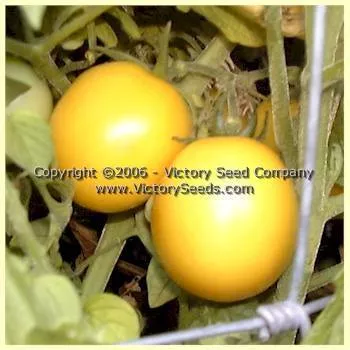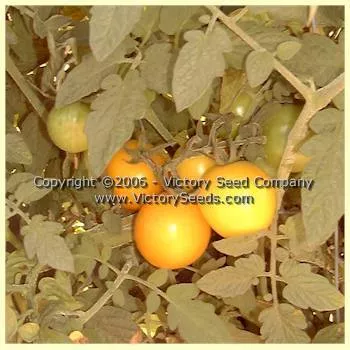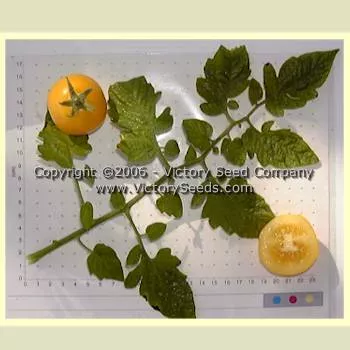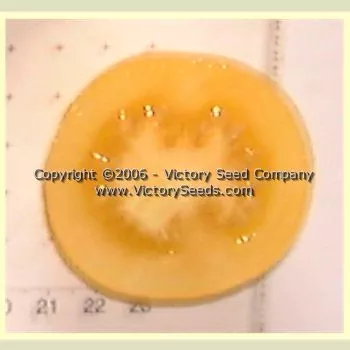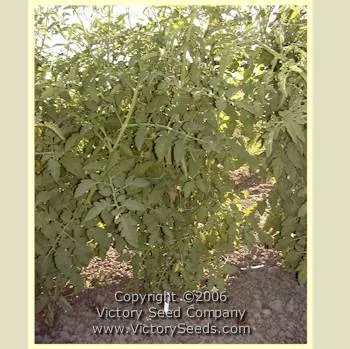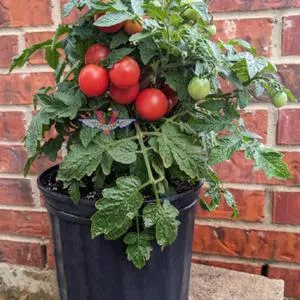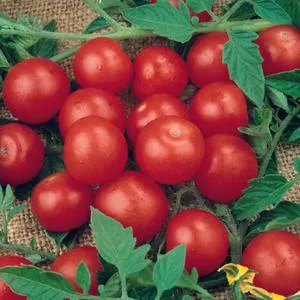




Livingston's Gold Ball Tomato
Solanum lycopersicum
Price: $3.45
SKU: 3400811VERY IMPORTANT NOTE: This variety will be available again in early January, 2026. Please signup below to be notified when it becomes available. Click here to learn more about our seasonal products.
65 days, indeterminate - The fruit average about one and one-half inches in diameter (perfect for snacking), weighing two to three ounces each, are slightly elongated, globe-shaped, and truly a beautiful canary-yellow color. The flesh is thick and back in the "olden-days," they were used for pickling or to make tomato preserves.[2]
Introduced by Alexander W. Livingston in 1892 as a "new and improved" version of the 'Yellow Egg' or 'Yellow Plum' tomato,[2] the catalog descriptions regularly exclaimed the virtues of the variety for decades. In their 1893 seed catalog, they describe it as follows:
Introduced by Alexander W. Livingston in 1892 as a "new and improved" version of the 'Yellow Egg' or 'Yellow Plum' tomato,[2] the catalog descriptions regularly exclaimed the virtues of the variety for decades. In their 1893 seed catalog, they describe it as follows:
"Offered for the first time last season. It is a round golden yellow variety and no other sort, except Livingston's Golden Queen, can approach it in quality. The flesh is thick and of extra good quality; large enough to slice; smooth as an apple and of a handsome gold color; grows in clusters; produces enormous crops. No matter if you are prejudiced against a yellow sort we are sure this will please you. TRY IT."[1]
Also from 1893, while reminiscing about the origin and history of 'Gold Ball' tomato in his book entitled "Livingston and the Tomato," Mr. Livingston wrote:
"The little yellow Egg, or Plum Tomato, which people ate raw in their gardens, and used so extensively for preserves, suggested to my mind that a new and improved variety for the same purposes might be very acceptable. One of our best growers found it among his growing tomatoes, and it was introduced in 1892. It is a bright golden yellow, round as a ball, one and one-half inches in diameter; it has few seeds, abundance of flesh, and is so very productive that some single plants have borne a half bushel of fruit. The tomatoes will, without injury, hang on the vine in clusters a week or ten days after fully ripe. I consider this gem of a tomato the best I have ever seen for preserves. No thrifty housewife who once fixes her eyes upon this Ball of Beauty will ever let it go from her garden or table."[2]
Another fun and tasty idea is to use them as the "egg" in "Vegan Deviled Eggs." Our seed stock originated as the USDA's National Seed Storage Lab's accession number NSL 27012.
Fruit Color: Orange
Fruit Color: Yellow
Special Groups: Livingston Tomatoes
Special Groups: "Epic" Tomatoes
Harvest Timing: Early/Short Season
Fruit Color: Yellow
Special Groups: Livingston Tomatoes
Special Groups: "Epic" Tomatoes
Harvest Timing: Early/Short Season
Sow seeds indoors (do not direct sow into the garden), using sterile seed starting mix, 6 to 8 weeks before your last expected frost date. Plant 1/4" deep, water lightly but keep moist until emergence.
Full light and cooler temps (60° to 70°) will help to prevent the seedlings from becoming too leggy. If plants become rootbound before you can safely set them into the ground, transplant them into larger pots.
Harden off plants before planting outside. Young plants are very susceptible to frost and sunburn damage. Avoid too much nitrogen. Water evenly but not in excess.
Click here to view our full tomato growing guide.
Full light and cooler temps (60° to 70°) will help to prevent the seedlings from becoming too leggy. If plants become rootbound before you can safely set them into the ground, transplant them into larger pots.
Harden off plants before planting outside. Young plants are very susceptible to frost and sunburn damage. Avoid too much nitrogen. Water evenly but not in excess.
Click here to view our full tomato growing guide.
Informational Sources:
- "Seed Annual for 1893," Livingston Seed Company, Columbus, Ohio, 1893.
- "Livingston and the Tomato: Being the History of Experiences in Discovering the Choice Varieties Introduced by Him with Practical Instructions for Growing," A. W. Livingston, 1893.
- "100 Heirloom Tomatoes for the American Garden," Dr. Carolyn Male, Workman Publishing, 1999, pages 116-117.
Customer Reviews:
Do you have experience with this one? 📝 📣 Write a review!
No reviews have been posted yet.

